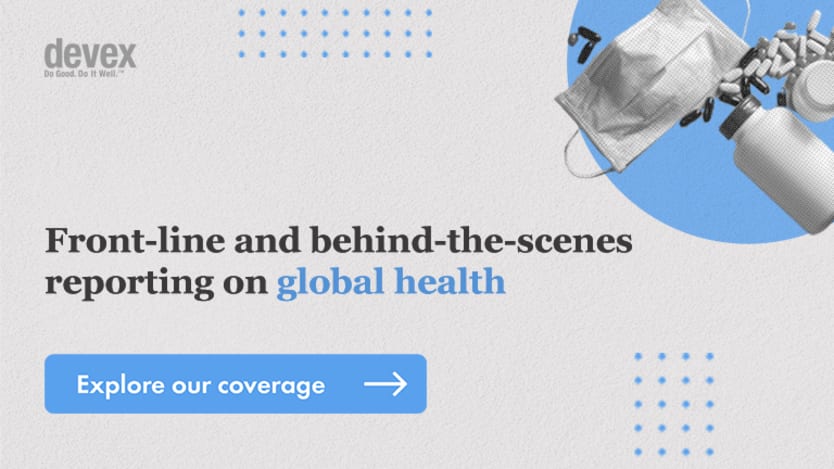
When Panganai Kapfunde was diagnosed with a highly drug-resistant form of tuberculosis in 2019, he was admitted to a hospital in Johannesburg, South Africa. The doctors initially started him on 32 pills a day, which he took for a month. The pills left him dizzy, nauseous, and vomiting frequently.
Sign up for Devex CheckUp
The must-read weekly newsletter for exclusive global health news and insider insights.
But then he was enrolled in the ZeNix study, and instead given seven pills a day, with no side effects. He spent two more months in the hospital and was released when he was cured of the disease.
The ZeNix trial builds off the success of a previous study that found a three-drug treatment plan was very effective at curing highly drug-resistant forms of TB — a highly fatal form of the disease. The study Kapfunde was involved in aimed to see whether the researchers conducting the ZeNix trial could maintain those high levels of success, but reduce the side effects. Researchers announced on Thursday at a press conference of the International AIDS Society Conference on HIV Science that they had successfully done so. The full results will be presented next week.
Reducing side effects, maintaining efficacy
To cure highly drug-resistant TB — which doesn’t respond to conventional first-line drugs used to treat the majority of patients with the disease — is a costly, lengthy endeavor that is hard on a patient’s body. Health care providers often use antibiotics not normally used for TB and highly toxic medicines that aren’t meant to be used for the length of time required to treat TB.
This could include a “hodgepodge” of drugs for 18 months or longer, including six months of painful injections that could cause hearing loss, deafness, and kidney failure, said Dr. Mel Spigelman, president and chief executive officer at TB Alliance. Even with these extensive efforts, only about 20% to 25% of patients were cured, he said.
The ZeNix study follows the Nix-TB trial, which published results last year, and tested the use of three drugs for six months: bedaquiline, pretomanid, and linezolid. The results of the study surpassed researchers’ expectations when it found an exceptionally high rate — 89% — of participants were cured of the disease. It also led to U.S. Food and Drug Administration approval of TB Alliance's new drug pretomanid for use as part of this regimen in 2019.
"The Nix trial was a massive breakthrough in the treatment of drug resistant TB,” said Dr. Francesca Conradie, principal investigator for both the ZeNix trial and the Nix-TB trial.
The use of this treatment can significantly reduce the number of pills a patient must take during their treatment, reduce the amount of time taken for treatment, and reduce the cost on the patient, society, and health systems, Spigelman said.
Despite the trial’s success, the use of linezolid had a high rate of adverse side effects. These included an impact on the bone marrow, leading to a decrease in white cells and anemia, damage to nerves outside of the central nervous system, manifesting in pain in the feet, as well as an impact on vision, Conradie said.
The ZeNix study enrolled 181 people with cases of highly-resistant TB in South Africa, Russia, Georgia, and Moldova, giving them the three drugs, but varying the doses and durations of the use of linezolid. It found that significantly reducing doses and duration of the use of linezolid can have the same levels of success in curing the disease, but that it reduced the side effects significantly.
“We are now fine-tuning the results and preserving the efficacy of Nix's 90% cure rate and decreasing the side effect profile,” Conradie said.
TB Alliance led and sponsored both trials, with financial support from bilateral donors including the U.S. Agency for International Development and in collaboration with research institutions in study countries.









